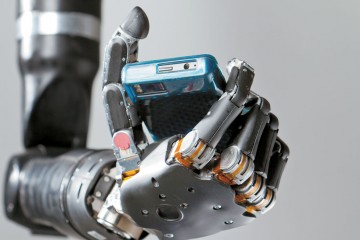Sunday's edition of The Baltimore Sun included a front-page story about Dana Burke, a Pennsylvania woman who lost most of her right arm to a hollow-point bullet 14 years ago.
More from The Sun:
Burke soon will be one of the world's first amputees to replace her lost limb with a high-tech, thought-controlled prosthetic capable of nearly matching the dexterity of flesh and bone. It's the fruit of a federally funded project at Johns Hopkins Applied Physics Laboratory six years in the making, intended to aid wounded war veterans. But Burke's case is a medical marvel, her doctor said, that could change amputation surgery and recovery for all patients.
"It shouldn't really be possible with a typical above-elbow amputation," said Army Capt. Michael A. Powell, a Hopkins graduate student researcher who developed the software that translates nerve impulses at the end of arms like Burke's into virtual motion on a laptop screen—a small step away from controlling a robotic prosthetic.
Researchers are currently working with Burke to fine-tune her control the device, and expect that she will be outfitted with a new arm by Feb. 1.
Read more from The Baltimore SunPosted in Health, Science+Technology








